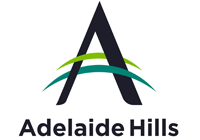Adelaide Hills Council
About the profile areas
The 2023 Estimated Resident Population for Adelaide Hills Council is 41,842, with a population density of 52.63 persons per square km.
Location and boundaries
The Adelaide Hills Council area is located in Adelaide’s eastern suburbs, between 10 and 40 kilometres from the Adelaide CBD. The Adelaide Hills Council area extends from Mount Bold Reservoir in the south to the South Para Reservoir in the north and from the Hills Face escarpment in the west to the eastern escarpment of the Mount Lofty Ranges. The Adelaide Hills Council area is bounded by the City of Playford and the Barossa Council area in the north, the Mid Murray Council area in the east, the District Council of Mount Barker area and the City of Onkaparinga in the south, and the City of Mitcham, the City of Burnside, the City of Campbelltown and the City of Tea Tree Gully in the west.
Traditional Owners
The original inhabitants of the Adelaide Hills Council area were the Peramangk and Kaurna Aboriginal people.
Important
|
Population41,842 2023 ABS ERP |
Land area795.0 square km |
Population density52.63 persons per square km |
Settlement history
European settlement dates from the late 1830s, with Adelaide Hills being one of the earliest settled areas in South Australia, due to proximity to Adelaide, high rainfall and fertile valleys. Gradual growth took place in the mid 1800s. Expansion occurred in the late 1800s, continuing into the early 1900s. The most significant development occurred during the post-war years. In more recent years, eastern parts of the Council area have become more urbanised, due to improved access to the Adelaide CBD. Improved transportation routes have also influenced population growth in the towns in the north of the Council area. The enumerated population has increased very slightly since the early 1990s.
Land use
The Adelaide Hills Council area is a predominantly rural area, with substantial rural-residential and township areas. The Council area encompasses a total land area of 795 square kilometres, including significant water catchments. Residential development varies from the more urban areas of the foothills and the main settlement of Stirling to the numerous smaller townships and villages. Rural land is used mainly for water catchments, conservation, forestry, farming, market gardening, grazing, quarrying and fruit growing.
Transport
The Adelaide Hills Council area is served by the South Eastern Freeway (Princes Highway) and the Adelaide-Melbourne railway line.
Major features
- Major features of the Adelaide Hills Council area include Belair National Park,
- many Conservation Parks (Black Hill,
- Charleston,
- Cleland,
- Cromer,
- Cudlee Creek,
- Giles,
- Horsnell Gully,
- Kenneth Stirling,
- Mark Oliphant,
- Montacute,
- Morialta,
- Mount George,
- Mylor,
- Scott Creek,
- The Knoll and Warren),
- The Heysen Trail,
- Mount Lofty and the Mount Lofty Ranges,
- Cleland Wildlife Park,
- Gorge Wildlife Park,
- Warrawong Wildlife Sanctuary,
- Mount Lofty Botanic Garden,
- National Motor Museum,
- Woodside Barracks,
- Eagle Mountain Bike Park,
- several reservoirs and various vineyards and wineries.
Included areas
- The Adelaide Hills Council area includes the localities of Aldgate,
- Ashton,
- Balhannah,
- Basket Range,
- Belair (part),
- Birdwood (part),
- Bradbury (part),
- Bridgewater (part),
- Carey Gully,
- Castambul,
- Chain of Ponds,
- Charleston,
- Cherryville,
- Cleland,
- Crafers,
- Crafers West (part),
- Cromer (part),
- Cudlee Creek,
- Dorset Vale (part),
- Forest Range,
- Forreston,
- Greenhill,
- Gumeracha,
- Heathfield,
- Horsnell Gully,
- Houghton (part),
- Humbug Scrub (part),
- Inglewood,
- Ironbank (part),
- Kenton Valley,
- Kersbrook,
- Lenswood,
- Lobethal,
- Longwood,
- Lower Hermitage,
- Marble Hill,
- Millbrook,
- Montacute,
- Mount Crawford (part),
- Mount George,
- Mount Torrens (part),
- Mylor (part),
- Norton Summit,
- Oakbank (part),
- Paracombe (part),
- Piccadilly,
- Rostrevor (part),
- Scott Creek,
- Stirling,
- Summertown,
- Teringie,
- Upper Hermitage (part),
- Upper Sturt (part),
- Uraidla,
- Verdun (part),
- Woodforde and Woodside.
